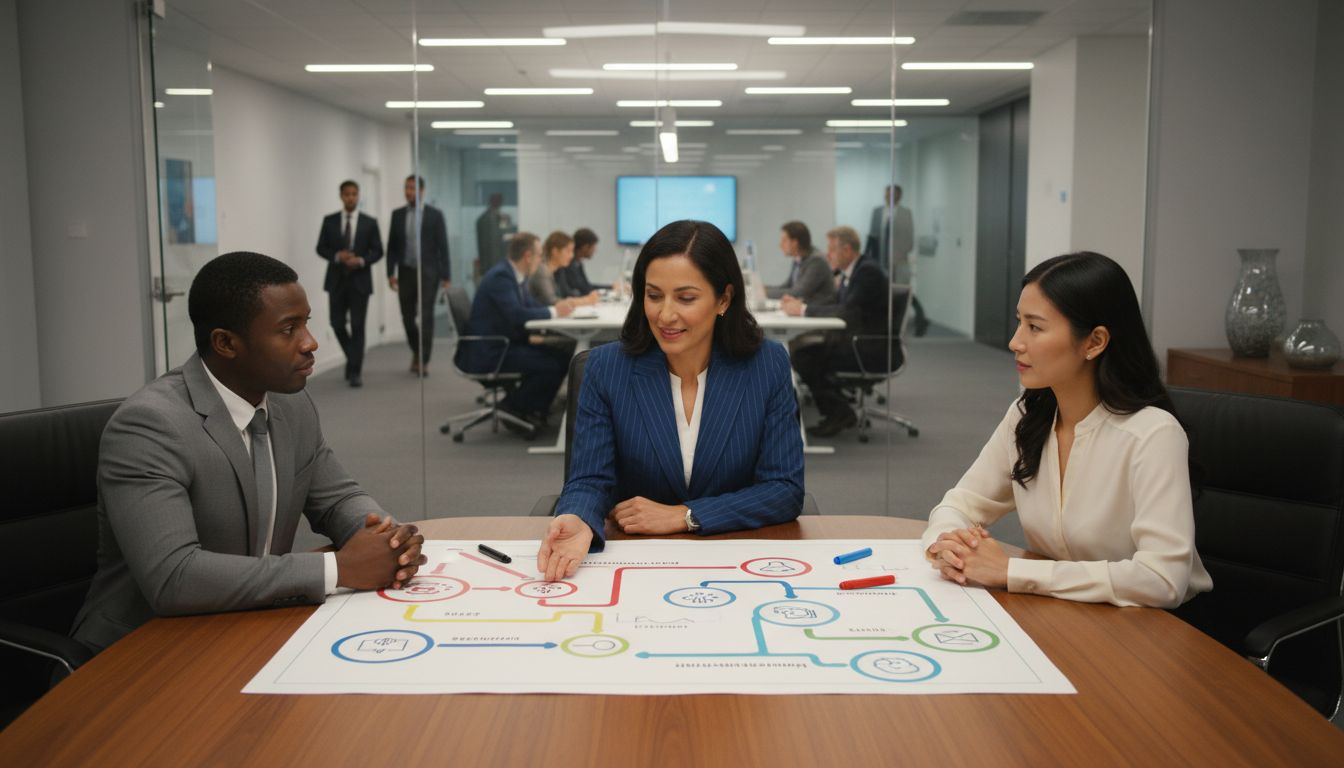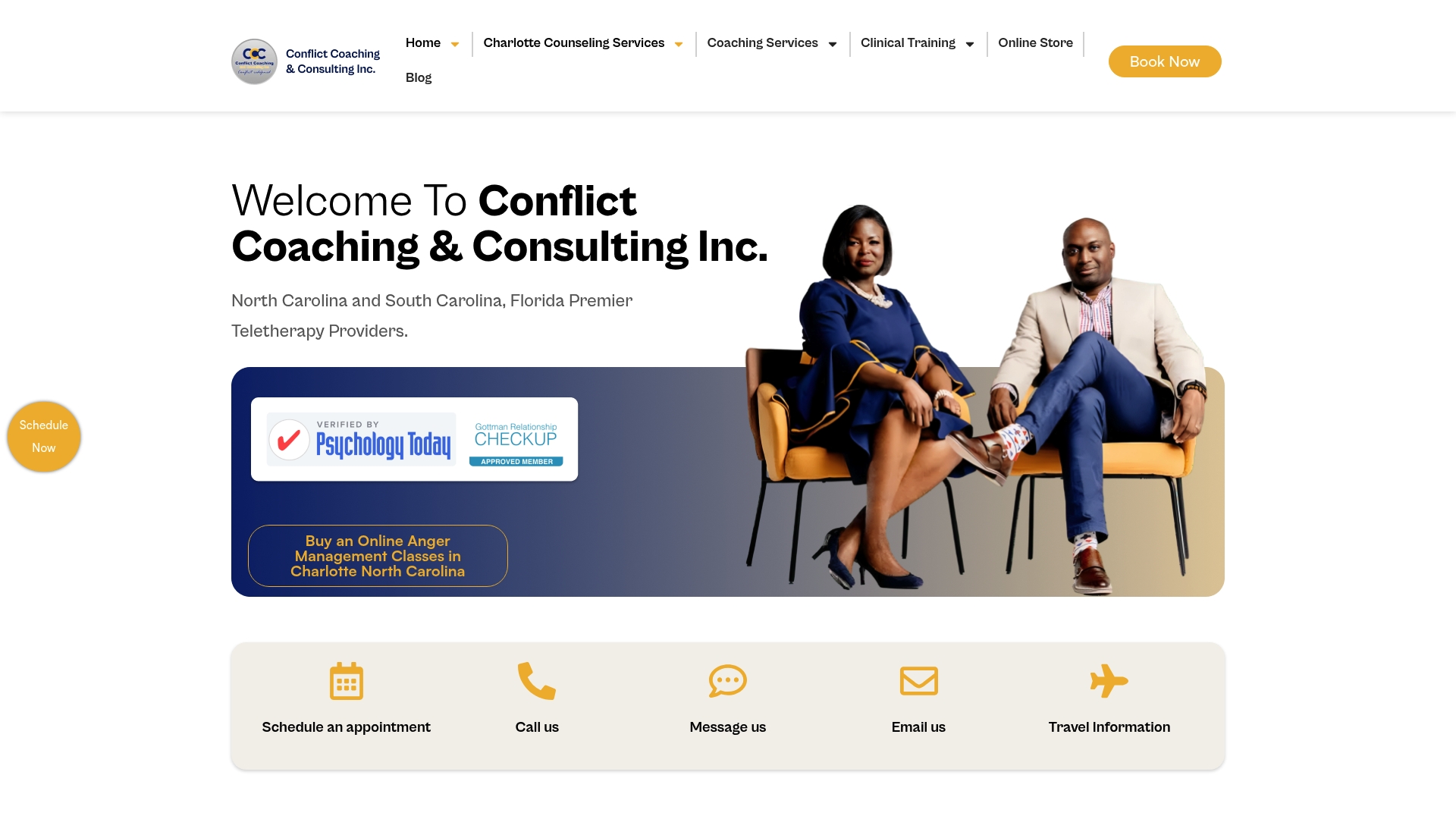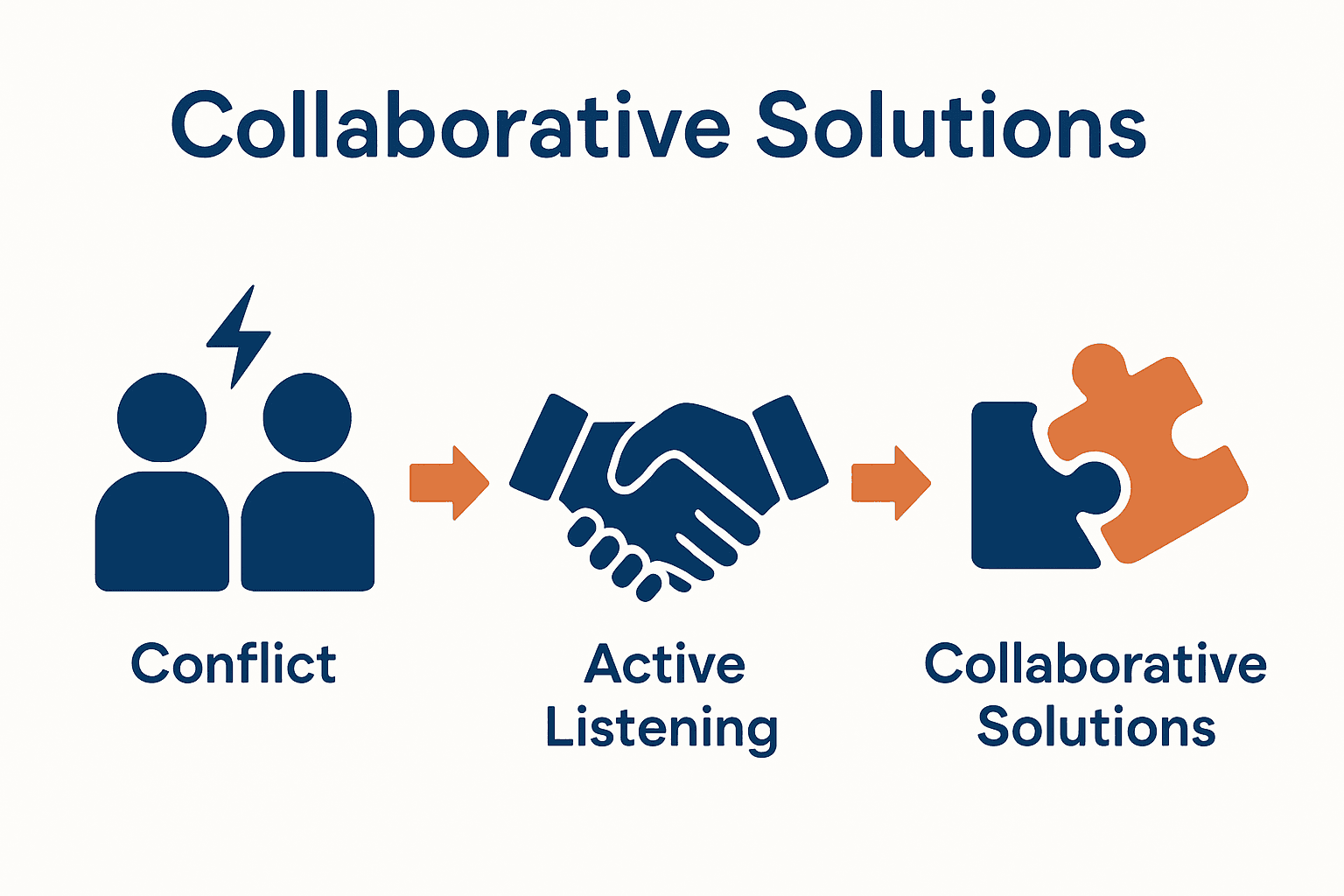Master Conflict Resolution Skills for Real-Life Success
Did you know that over 60 percent of meaningful conversations break down due to misunderstandings? Handling tough discussions well can shape relationships at home and work. When you approach conflict with the right mindset, recognize emotional hot spots, and use clear listening and communication skills, you give yourself the tools to turn friction into progress. Discover steps that help you move from tension to real connection with anyone.
Table of Contents
- Step 1: Prepare Your Mindset for Constructive Dialogue
- Step 2: Identify Key Issues and Emotional Triggers
- Step 3: Apply Active Listening and Empathy Techniques
- Step 4: Communicate Boundaries and Find Common Ground
- Step 5: Evaluate Solutions and Strengthen Relationships
Quick Summary
| Key Point | Explanation |
|---|---|
| 1. Cultivate a constructive mindset | Approach conversations as opportunities for mutual understanding rather than potential conflicts. Focus on positive outcomes during dialogue preparation. |
| 2. Identify emotional triggers | Understand your own emotional responses to manage reactions. Reflect on past experiences that might influence current feelings during conversations. |
| 3. Practice active listening | Fully focus on the speaker without distractions. Use ‘I’ statements to express feelings and avoid blame to foster open dialogue. |
| 4. Clearly communicate boundaries | Articulate your personal boundaries calmly. Use constructive questions to explore shared interests instead of making accusatory statements. |
| 5. Explore collaborative solutions | Create a joint environment for brainstorming solutions. Use open-ended questions and evaluate options together to strengthen relationships. |
Step 1: Prepare Your Mindset for Constructive Dialogue
Before engaging in challenging conversations, you need to create an internal environment primed for understanding and growth. According to research from the ‘Empathosphere’ study, successfully navigating difficult dialogues starts with cultivating a climate conducive to change through perspective-taking.
To prepare your mindset, begin by acknowledging that every conversation is an opportunity for mutual understanding. As insights from tomi.au suggest, adopting a growth mindset means visualizing positive outcomes before the dialogue even begins. This means reframing potential conflict as a collaborative problem solving session where both parties can learn and evolve.
A practical strategy involves taking several deep breaths and consciously shifting your mental approach. Imagine yourself not as an opponent, but as a cooperative partner seeking shared understanding. This subtle mental reset can transform defensive reactions into open curiosity. Before speaking, pause and ask yourself: “What can I learn here? How can we move forward together?” Remember that your goal is connection not conquest.
Step 2: Identify Key Issues and Emotional Triggers
Identifying the underlying emotional triggers in a conflict is critical to finding meaningful resolution. According to nationaltraining.edu.au, conflicts often stem from deeper issues beyond surface level disagreements, such as unmet expectations or unresolved emotional responses.
To effectively uncover these triggers, start by practicing honest self reflection. adypu.edu.in emphasizes that recognizing your own emotional triggers and personal biases significantly enhances self awareness and helps manage reactive responses during tense interactions. Ask yourself probing questions like: What specific words or actions make me feel defensive? What underlying fears or past experiences might be influencing my current emotional state?
A practical approach involves creating a personal emotional map. Track your reactions during challenging conversations noting patterns in your emotional responses. Pay attention to physical signals like increased heart rate, tension in your body, or changes in breathing. When you notice these signs, pause and ask yourself what specific aspect of the interaction is causing this internal reaction. By understanding your emotional landscape, you transform potential conflict triggers into opportunities for growth and deeper understanding.
 For deeper insights into this process, check out our understanding emotional triggers article.
For deeper insights into this process, check out our understanding emotional triggers article.
Step 3: Apply Active Listening and Empathy Techniques
Mastering active listening and empathy is crucial for transforming potentially contentious conversations into opportunities for genuine understanding. According to lifeskillsonline.com, developing self awareness and understanding others emotions are foundational steps in cultivating empathy essential for resolving conflicts effectively.
To practice active listening, focus completely on the speaker without planning your response. This means putting away distractions and giving full attention to both verbal and nonverbal communication. Wikipedia suggests using ‘I’ statements to express your feelings without assigning blame. For instance instead of saying ‘You always ignore me’ try ‘I feel frustrated when I dont feel heard’. This approach creates a safer space for open dialogue and reduces defensive reactions.
A powerful technique involves mirroring and validating the other persons emotions. Repeat back what you heard to confirm understanding and acknowledge their feelings. For example ‘It sounds like youre feeling overwhelmed by this situation. Am I understanding that correctly?’. This demonstrates that you are truly listening and care about their perspective. By practicing these techniques, you transform potential conflicts into opportunities for deeper connection.
For more insights into empathetic communication, check out our empathy in conflict resolution guide.
Step 4: Communicate Boundaries and Find Common Ground
Communicating boundaries and finding common ground requires intentional and strategic dialogue that respects both parties perspectives. According to salto-youth.net, addressing relationship issues effectively means acknowledging feelings and establishing mutual understanding as key emotional resolutions.
Start by clearly articulating your personal boundaries using calm and direct language. Explain what you need and why it matters to you without becoming defensive or accusatory. Constructive Dialogue recommends adopting an explorer mindset by asking constructive questions that help uncover shared interests. For instance instead of stating ‘You never listen’ try ‘Can we discuss how we might communicate more effectively?’. This approach transforms potential confrontations into collaborative problem solving opportunities.
A practical strategy involves creating a shared framework of understanding. Validate the other persons perspective by reflecting back what you heard and identifying areas of agreement. Acknowledge that different viewpoints can coexist without requiring complete agreement. By demonstrating genuine respect and curiosity you create an environment where compromise becomes possible. For more guidance on establishing healthy relationship dynamics, explore our boundaries in relationships guide.
Step 5: Evaluate Solutions and Strengthen Relationships
Evaluating solutions and strengthening relationships requires a strategic and collaborative approach that goes beyond surface level problem solving. According to arxiv.org, simulating conflicts and exploring alternative conversational paths can significantly improve conflict resolution skills and enhance relationship dynamics.
Begin by creating a collaborative environment where both parties can brainstorm potential solutions without judgment. As Wikipedia) highlights through David W. Johnsons research on conflict resolution, the key is teaching interpersonal skills that transform conflicts into opportunities for mutual understanding. Ask open ended questions like ‘What solutions might work for both of us?’ and ‘How can we address this in a way that respects both our needs?’. This approach shifts the conversation from adversarial to cooperative.
A practical method involves creating a joint evaluation matrix where you list potential solutions and assess their potential benefits and drawbacks together. Rate each solution based on fairness accessibility and long term relationship impact. Be willing to compromise and recognize that the strongest solutions often emerge from genuine collaboration. Remember that the goal is not to win an argument but to strengthen your connection. For more insights into nurturing relationship communication, explore our couples communication exercises guide.
Transform Difficult Conversations Into Lasting Peace
Are you struggling to navigate conflicts that leave you feeling unheard or overwhelmed? This article highlights the power of mindset preparation, emotional awareness, and empathetic communication to move beyond conflict toward connection. If you find yourself wanting real tools to manage anger, set healthy boundaries, and foster understanding in your relationships, you are not alone. Many face the challenge of transforming emotional triggers into growth opportunities without knowing where to start.

Take control of your conflict resolution journey today with professional support tailored to your unique needs. Explore personalized anger management classes, couples therapy, and individual counseling designed to strengthen your communication skills and deepen your relationships. Whether you are seeking services for yourself or coaching to enhance your personal development, visit Mastering Conflict to discover comprehensive mental health resources. Now is the time to unlock proven strategies and compassionate clinical guidance that help you move from confrontation to collaboration in everyday life. Begin your transformation now by joining our supportive community at Mastering Conflict and access expert insights that align perfectly with the techniques described in this guide.
Frequently Asked Questions
How can I prepare my mindset for effective conflict resolution?
To prepare your mindset, acknowledge that every conversation is an opportunity for mutual understanding. Visualize positive outcomes and practice deep breathing to foster a collaborative spirit before engaging in the dialogue.
What techniques can I use to identify my emotional triggers during conflicts?
Practice honest self-reflection by asking yourself what specific words or actions evoke defensive feelings. Create a personal emotional map to track your reactions during conversations and identify patterns in your emotional responses.
How do I apply active listening in difficult conversations?
Engage in active listening by focusing entirely on the speaker without formulating your response until they’re finished. Use ‘I’ statements to express your feelings and mirror the other person’s emotions to demonstrate your understanding.
What are effective ways to communicate boundaries in a conflict?
Clearly articulate your personal boundaries using calm language to explain what you need and why it matters. Use constructive questions to explore shared interests and transform potential confrontations into collaborative dialogues.
How can I evaluate solutions during conflict resolution?
Create a collaborative environment where both parties can brainstorm and assess potential solutions. Together, list the options and evaluate their benefits and drawbacks to find the most mutually satisfying outcomes.
How can I strengthen relationships after resolving a conflict?
Strengthen relationships by focusing on collaborative problem-solving and building trust through open communication. Regularly check in with the other party to ensure that needs are continually met and to reinforce the connection.

Recommended
- How to Deal With Parenting Conflicts
- Mastering Empathy in Conflict Resolution: A Step-by-Step Guide – Mastering Conflict
- Effective Conflict Resolution Steps for Couples, Families, and Professionals 2025 – Mastering Conflict
- Master Assertive Communication Skills for Conflict Resolution – Mastering Conflict
- 7 Essential Leadership Skills for Students to Develop|CS
- Wisdom – Your AI Guide to Love, Success & Self-Mastery

